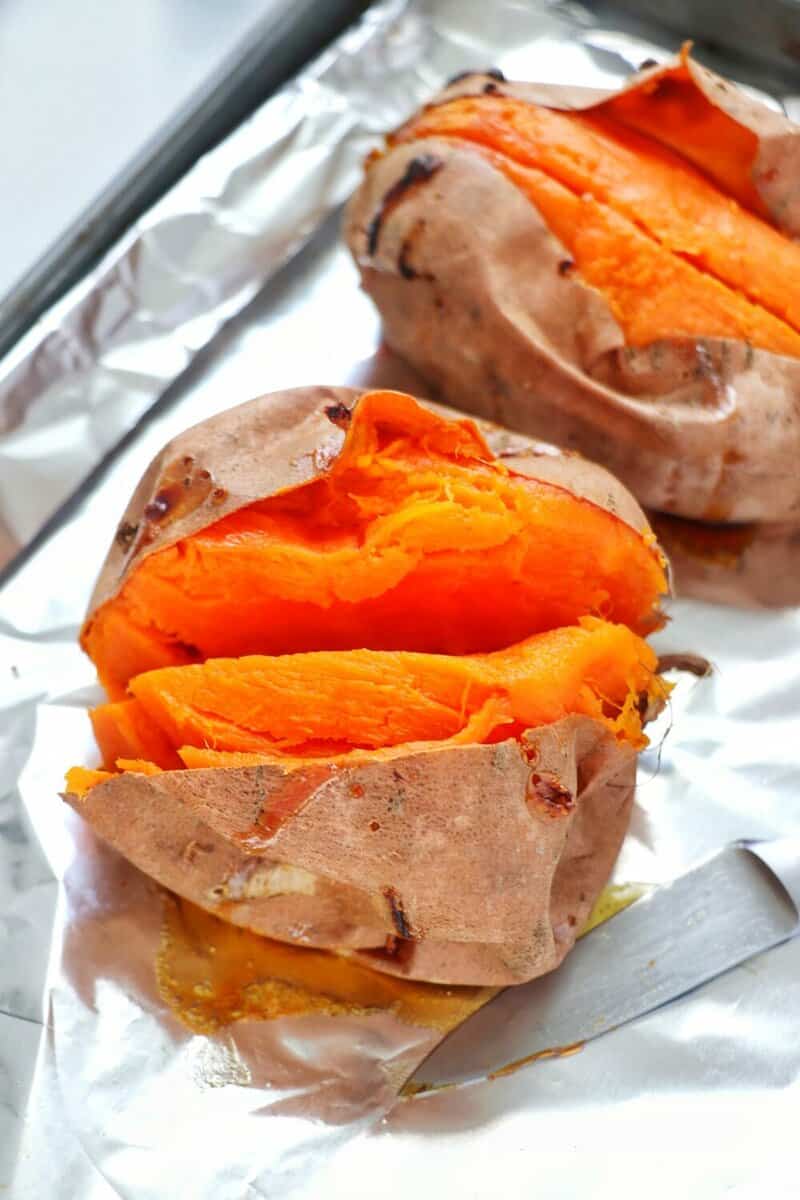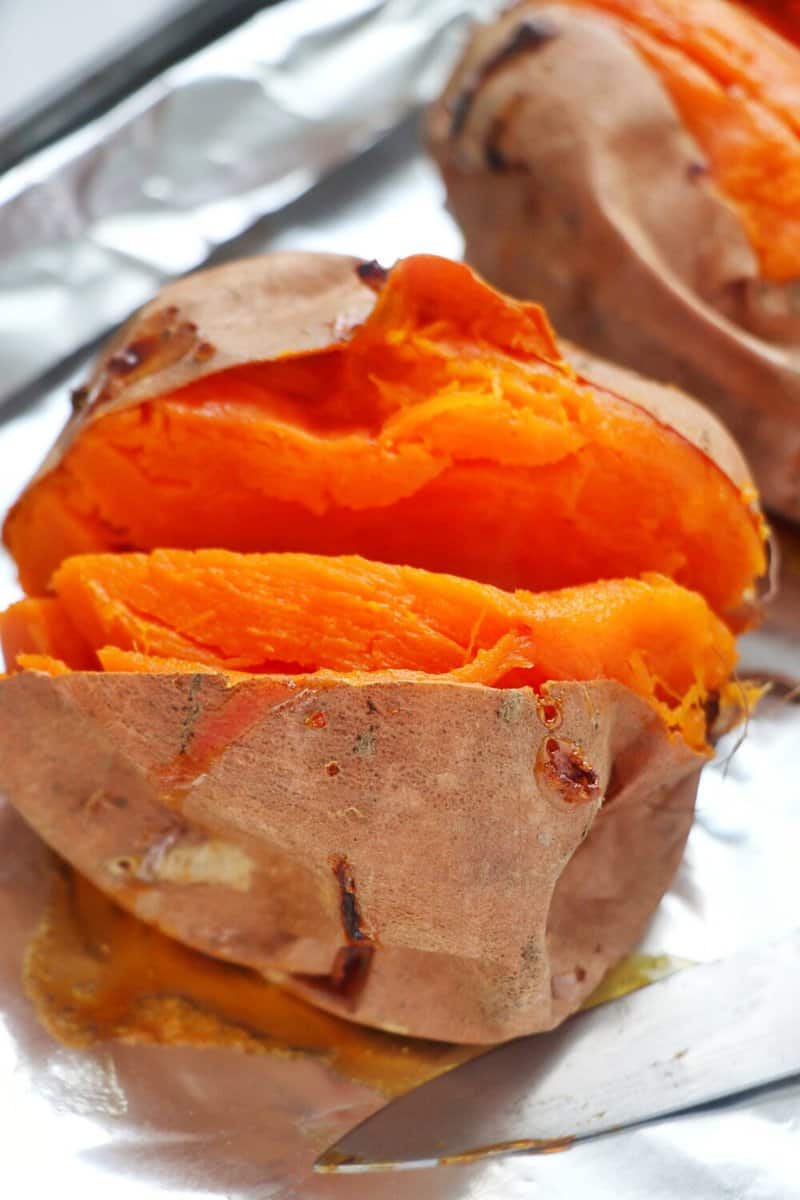Sweet potatoes, a nutritional powerhouse, are a versatile vegetable that can be cooked in various ways. However, different cooking methods can impact the bioavailability of their nutrients. This guide explores the optimal cooking methods to preserve the nutritional value of sweet potatoes.
Understanding Sweet Potato Nutrition
Sweet potatoes are an excellent source of essential nutrients, including:
- Vitamins: Vitamin A (beta-carotene), vitamin C, vitamin B6
- Minerals: Potassium, phosphorus, magnesium
- Fiber: Soluble and insoluble fiber
- Antioxidants: Anthocyanins, carotenoids
Impact of Cooking Methods on Sweet Potato Nutrients
Cooking methods can affect the retention of nutrients in sweet potatoes. Here’s a breakdown:
Boiling:
- Beta-carotene: Retains up to 92% of beta-carotene, making it the most effective method for preserving this nutrient.
- Anthocyanins: Less effective in preserving anthocyanins compared to roasting.
- Other Phenolic Compounds: Preserves moderate amounts of phenolic compounds.
Baking:
- Beta-carotene: Retains less beta-carotene than boiling, but still a good option.
- Anthocyanins: Not as effective as roasting in preserving anthocyanins.
- Other Phenolic Compounds: Preserves fewer phenolic compounds than steaming.
Roasting:
- Beta-carotene: Retains less beta-carotene than boiling, but comparable to baking.
- Anthocyanins: Most effective method for preserving anthocyanins, especially in purple sweet potatoes.
- Other Phenolic Compounds: Preserves moderate amounts of phenolic compounds.
Steaming:
- Beta-carotene: Retains less beta-carotene than boiling, baking, or roasting.
- Anthocyanins: Less effective in preserving anthocyanins compared to roasting.
- Other Phenolic Compounds: Preserves higher amounts of phenolic compounds than baking or roasting.
Optimal Cooking Methods for Different Nutrients
To maximize nutrient retention, consider the following cooking methods:
- For Beta-Carotene: Boil sweet potatoes for 20 minutes with a tightly covered lid.
- For Anthocyanins: Roast purple sweet potatoes to preserve their vibrant color and antioxidant content.
- For Other Phenolic Compounds: Steam sweet potatoes to retain a wider range of these beneficial compounds.
Additional Tips for Retaining Nutrients
- Keep the skin on: The skin contains a significant amount of nutrients, including fiber and antioxidants.
- Cook in a microwave: Microwaving sweet potatoes can help preserve nutrients compared to boiling or baking.
- Limit cooking time: Overcooking can lead to nutrient loss.
- Choose the right variety: Purple sweet potatoes have higher anthocyanin content than yellow or orange varieties.
By understanding the impact of cooking methods on sweet potato nutrients, you can optimize your cooking techniques to preserve their nutritional value. Boiling is the best option for maximizing beta-carotene retention, while roasting is ideal for preserving anthocyanins. Steaming is a good choice for retaining other phenolic compounds. By incorporating these tips, you can enjoy the full nutritional benefits of sweet potatoes in every bite.
Try this delicious LIVESTRONG. com recipe for Smoky Maple Sweet Potatoes, which only needs five ingredients and can be prepared in about 15 minutes: sweet potatoes, water, sea salt, maple syrup, and smoked paprika. For a sweet and smoky flavor, the recipe calls for boiling the sweet potatoes in a pot with water, maple syrup, and paprika.
Researchers examined the effects of various cooking techniques on the bioavailability of various bioactive compounds in five varieties of sweet potatoes in the September 2015 Food Science and Human Wellness study_,_. The researchers observe that the starch in raw sweet potatoes makes it difficult for the body to digest and absorb nutrients. Nevertheless, no cooking technique can preserve all of the chemical makeup, nutritional value, and antioxidant capabilities of sweet potatoes.
According to the Harvard T, sweet potatoes, which are edible roots in the morning glory family, are high in potassium, fiber, and vitamins C and B6. H. Chan School of Public Health. In the realm of plants, they are also among the best providers of beta-carotene, which is a precursor to vitamin A. The USDA states that one small, plain baked sweet potato, with the skin on, contains:
Sweet potatoes come in a wide range of colors and varieties, despite being most commonly associated with the orange-fleshed vegetables that go with marshmallows on Thanksgiving. Sweet potatoes cannot be cooked in a single, healthiest way because different cooking techniques alter the nutrients’ bioavailability in each variety.
Cook and eat sweet potatoes in a variety of ways to make sure you get all of their nutritional benefits. There are a ton of delectable sweet potato recipes available online. There are several ways to prepare sweet potatoes: chop them into small cubes and roast them with olive oil and sea salt; steam and mash them; or bake them whole and top with onions and chives.
Recipe Tips & Tricks
If youre going to serve the perfect baked sweet potato. While there aren’t many hints and techniques for creating them, there are a few important considerations.
- To ensure that your oven is appropriately heated when you add your sweet potatoes, preheat it.
- On occasions when I’m not in the mood to wait for the oven to heat up, I’ll put my sweet potatoes in a cold oven and cook them for an additional fifteen minutes. The tricky part of this is that when the oven temperature rises, the potatoes start to cook.
- I find that baking sweet potatoes directly on the oven rack results in even crispier skin. Remember to set a baking sheet on the rack underneath them to collect any sugar that drips.
- When sweet potatoes are baked in the oven, their crispy, nutrient- and fiber-rich skin can be eaten! Its also where most of the flavor is.
- Yukon Gold or Russet potatoes are great alternatives if you’re not a fan of sweet potatoes. Theyll still be packed with flavor and just as delicious!.
- It is not necessary to coat your potatoes in olive oil before baking them. I find this to be an unnecessary step.
- To enhance the flavor if your sweet potato isn’t overly sweet, try adding one teaspoon of brown sugar.
- Don’t skip the piercing; it releases the natural sugars and lets the sweet potato steam.
- You can always chop the sweet potatoes into smaller pieces if you want them to be extra crispy. Smaller pieces = more surface area = more crunch.
- Remove the meat and reserve it for a sweet potato pie or whipped sweet potato.
- If you’re pressed for time, bake your sweet potato for 16 minutes in the microwave, turning it over halfway through.

Here are the questions
Depending on the size, sweet potatoes usually take around 1-1. 5 hours to bake properly. When they feel completely soft to the touch, you’ll know they’re ready.
Before roasting potatoes, there’s no need to boil them. Just give them a thorough cleaning and pierce them with a fork before baking.
Cooking sweet potatoes in the oven is the healthiest method. Slow cooking retains nutrients and flavor in sweet potatoes, so although it takes a little longer, it is worth it.
No, sweet potatoes do not need to be chopped before baking. Baking them whole is perfect.
This all depends on how youll serve them. Sweet potatoes are best prepared by baking them in the oven. When compared to boiled sweet potatoes, the flavor of the sweet potatoes is better. Boiled sweet potatoes are great when youre short on time.
Sweet potatoes do not require to be covered with foil before baking. The only reason to wrap them in foil is to prevent the sugars from leaking out, although I find that doing so takes an extra 20 minutes or so.
Yes, baked sweet potatoes keep well in the refrigerator for three to five days. Reheat in the oven or in the microwave before serving.
Your oven-roasted sweet potatoes can go from being healthful to being unhealthy very quickly. Adding one tablespoon of unsalted butter, kosher salt, cinnamon, and fresh thyme is my favorite healthy recipe. Sweet potatoes can be topped with grilled chicken, black beans, salsa, avocado, Greek yogurt, or plain yogurt as some healthy options. Try my BBQ chicken baked potato recipe.
When stored in the refrigerator, baked sweet potatoes will stay fresh for seven days when covered and stored airtight. Sweet potatoes should be frozen in a freezer-safe container for up to three months. Thaw for 24 hours before reheating. Warm up the chilled sweet potatoes for ten minutes at 350°F in the oven. You can also reheat sweet potatoes in the microwave. Reheating frozen sweet potatoes may take close to 1 hour.

How to Cook Sweet Potatoes WITHOUT Causing Blood Sugar!
FAQ
What is the best way to cook sweet potatoes to retain nutrients?
Does baking sweet potatoes destroy nutrients?
Is it better to boil or bake sweet potatoes?
Is it healthier to bake or microwave a sweet potato?
What is the healthiest way to cook sweet potatoes?
There is no one healthiest way to cook sweet potatoes, as different cooking methods affect the bioavailability of nutrients in each variety. Sweet potatoes — edible roots within the morning glory family — are rich in potassium, fiber and vitamins C and B6, according to the Harvard T.H. Chan School of Public Health.
How do you cook sweet potatoes?
The best way to cook sweet potatoes is: first preheat the oven. Then, on a baking sheet lined with aluminum foil, prick sweet potatoes all over with a fork. Rub the outsides with a small amount of olive oil if you intend to eat the skins. Bake until tender, 45 to 50 minutes. Let cool, then split the tops open with a knife and top with a pat of olive oil. Season with salt and pepper before serving.
Should sweet potato be cooked or boiled?
The same is true for the rest of the sweet potato. Baking can also cause an 80% drop in vitamin A levels, twice as much as boiling. Therefore, from a nutritional standpoint, boiling rather than baking should be recommended for cooking sweet potato.
How do you cook sweet potatoes in a crock pot?
Line a baking pan with parchment paper, and set aside. Start with thin, evenly shaped sweet potatoes. Slice the knife into each sweet potato 8-10 times per potato, going about a third of the way down with each cut. Place potatoes in the pan, then place the pan on the oven center rack.
